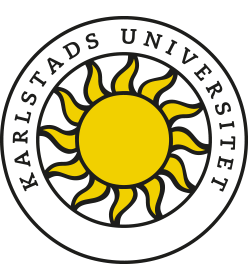Nordidactica - Journal of Humanities and Social Science Education är en nordisk ämnesdidaktisk peer-review tidskrift som ska vara en arena för forskning med relevans för högre utbildning, lärarutbildning och skola.
Ämnesdidaktiska studier av undervisning och lärande i geografi, historia, samhällskunskap, statsvetenskap och religionskunskap står särskilt i fokus, men tidskriften är också öppen för artiklar där breda teman som inkluderar frågor som rör dessa ämnen behandlas.
Nordidactica har ambitionen att kombinera en hög vetenskaplighet med en hög grad av aktualitet i ämnesdidaktiska frågor. Basen är referee-granskade forskningsartiklar. Tidskriften publicerar också en avdelning med texter i form av recensioner, konferensinformation, beskrivningar av projekt eller annat aktuellt från fältet.
Open Source
Nordidactica är en samhällsvetenskapsdidaktisk tidskrift med Open Access. Det innebär att det är fritt att använda, sprida, göra om och bygga vidare på artiklarna så länge det sker i icke-kommersiellt syfte och med källhänvisning.
Gränslöst nordiskt samarbete
Tidskriften ägs av Centrum för de samhällsvetenskapliga ämnenas didaktik (CSD) vid Karlstads universitet, och drivs tillsammans med ett nätverk av nordiska aktörer från olika lärosäten.
Tidskriften Nordidactica är ett samarbete mellan:
- Göteborgs universitet
- Karlstads universitet
- Noregs Teknisk-Naturvitskaplege Universitet (NTNU) Trondheim
- Syddansk Universitet
- Turun yliopisto - Åbo Universitet
- UCL University College, Danmark
- Umeå universitet
- Universitetet i Stavanger
- University of Eastern Finland
- Uppsala universitet
Artiklarna i tidskriften är i huvudsak författade på norska, svenska eller danska, men även bidrag på engelska välkomnas. Alla artiklar har även korta engelska sammanfattningar.
Nordidactica har erhållit publiceringsstöd från The joint committee for Nordic research councils in the humanities and social sciences, NOS-HS (https://www.aka.fi/en/nos-hs).
Senaste numret
Det är med ödmjukhet och glädje som vi, Kristian Niemi och Niclas Modig, tar över redaktörskapet för Nordidactica. Vår ambition är att förvalta tidskriften som en nordisk arena för ämnesdidaktisk forskning med hög vetenskaplig kvalitet och stark förankring i pågående undervisnings‑ och samhällsfrågor.
Nummer 2025:1 belyser, från olika infallsvinklar, hur didaktiska val får konsekvenser för elevers möjligheter att orientera sig i samtidens komplexa frågor. Artiklarna spänner från skolfrånvarons betydelse för undervisningsinnehåll till hur klimatkris, könsnormer och ämnesspråk utmanar traditionella sätt att planera, genomföra och analysera undervisning. Tillsammans visar artiklarna hur skärpta begrepp och medvetna metodval driver ämnesdidaktiken framåt.
Rolf Halse: A didactic model for teaching social studies: Contributing to rich tasks. Halse presenterar en semantiskt grundad relationsmodell som kopplar samman varför-frågor, samhällsorienterande stoff och elevernas livsvärld. Modellen bygger vidare på den didaktiska triangeln och lägger till sju kategorier med kategorial bildning i centrum.
Annica Jäverby, Christina Osbeck & Martin Stolare: Problematisk skolfrånvaro i relation till skola och undervisning – ett ämnesdidaktiskt perspektiv. Genom nio intervjuer visar artikeln att lärare i historia och religionskunskap betonar innehåll som anpassas till enskilda elevers intressen när skolfrånvaron ökar. Med Klafkis kategoriala bildning som raster synliggörs spänningen mellan subjektiv mening och samhällelig orientering.
Jonas Nordmark & Karin Bergman Rimbe: Förslag till vidgad förståelse av ett ämnesspråk: SO-didaktiska överföringsbegrepp. Författarna introducerar didaktiska överföringsbegrepp, metaforiska och ämnesövergripande språkliga bryggor som länkar vardagliga föreställningar till akademiska perspektiv inom de samhällsorienterande ämnena. De visar hur mångtydiga ord riskerar att glida mellan ekonomi, juridik, etik och historia utan lärarens styrning.
Vidar Fagerheim Kalsås: Historieundervisning under klima- og naturkrise: Å vurdere skala, menneskeleg agens og historisk-planetarisk endring. Artikeln utgår från debatten om antropocen och tre analytiska frågor om tid/rum-skala, mänsklig agens och historisk-planetarisk förändring. Dessa frågor används för att granska tre norska gymnasieläroböcker i historia.
Øyvind Soltun Andreassen: Ni grunnsteiner for undervisning om kjønn og kjønnsidentitet: Et bidrag til etablering av trygge rom for meningsmangfold. Andreassen presenterar nio “grunnsteiner” framtagna i dialog med lärare, elever och intressenter. Grundstenarna förenar normkritisk pedagogik med ett deliberativt fokus på perspektivmångfald och betonar lärarens ansvar för kontextkänsliga anpassningar.
Som nya redaktörer ser vi fram emot att föra en fortsatt dialog om hur ämnesdidaktisk forskning kan bidra till ett kritiskt, inkluderande och hållbart utbildningslandskap. Vi välkomnar bidrag som prövar nya teorier, metoder och empiriska fält, fördjupar den nordiska skol‑ och högskolepraktiken! Vi vill även särskilt uppmuntra er att inkomma med reviews och konferensrapporter — det händer mycket i våra fält, och det är viktigt att sprida den kunskapen som redan finns.
Kristian Niemi & Niclas Modig, redaktörer
Karlstad, maj 2025


